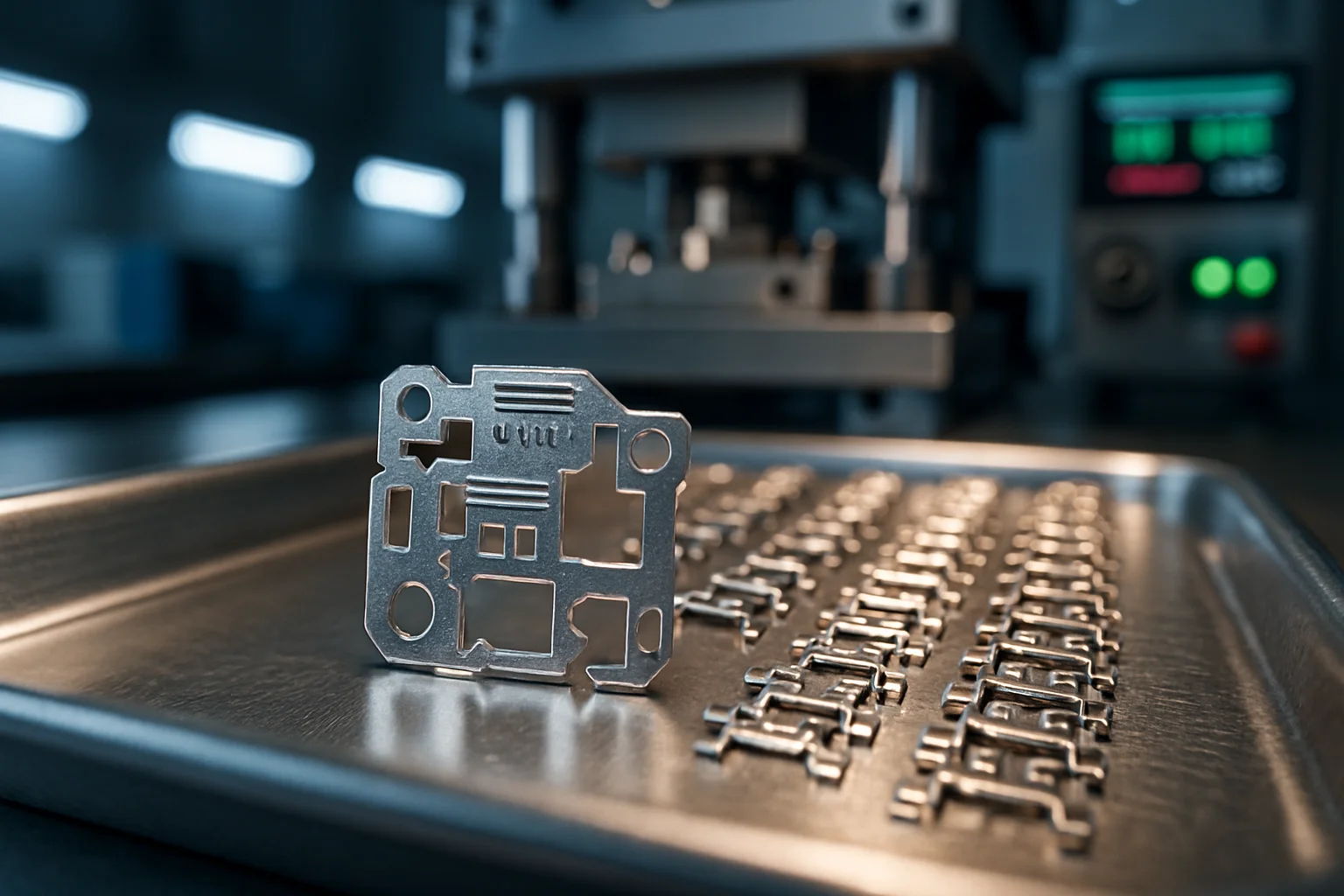
Stamped Components
NEXAMS Leading the Way in Metal Stamping and Progressive Tooling Solutions for Precision Stamped Components Across Diverse Industries
Metal stamping is a high-speed, precision-driven process that enables the production of stamped components for various industries, and our approach is deliberately empathetic, ethical, and grounded in clear decision-making so stakeholders stay informed at every stage; this people-first discipline is strengthened by transparent coordination with Vendors, an accountable single-point Supplier, multiple qualified Suppliers for risk balancing, production-ready Manufacturers for execution excellence, operational Support that is responsive and measurable, and service cells embedded in local operations as well as capacity staged at nearby facilities.
Through the stamping process, flat sheet metals are formed into complex geometries using progressive die and progressive stamping techniques, and each gate is validated against quality plans that reflect real-world constraints; this disciplined workflow is reinforced by audited Vendors, a planning-savvy Supplier who aligns materials and lead times, specialist Suppliers that cover niche alloys and finishes, production Manufacturers that scale cleanly, lifecycle Support for change control, and logistics pathways that prioritize local responsiveness and nearby turnaround.
Our capability set spans deep draw stamping, micro stamping, and sheet metal stamping for automotive ancillary and components automotive programs, with design-for-stamping reviews that make choices explicit and humane; in parallel we maintain open feedback loops with value-adding Vendors, a mission-focused Supplier that owns the plan of record, complementary Suppliers who de-risk spikes in demand, best-in-class Manufacturers for repeatability, field-ready Support that resolves issues fast, and escalation paths through local teams and nearby production cells.
Benefits of Stamped Components Technology
High-speed output with tight tolerances is achieved by combining robust tooling with closed-loop inspection and SPC trending; the day-to-day cadence is stabilized by dependable Vendors, a scheduling-literate Supplier, capacity-buffering Suppliers, disciplined Manufacturers, and always-on Support that keeps takt aligned to real demand across local plants and nearby hubs.
Design versatility—from deep draw cups to micro-scale contacts—is unlocked by early DFMEA/PFMEA collaboration and simulation-backed feasibility checks, then landed with clear traveler docs; this clarity rides on material-ready Vendors, BOM-owning Supplier controls, specialized Suppliers for coatings and tempers, capable Manufacturers, and sustaining Support that accelerates PPAP at both local and nearby lines.
Cost efficiency emerges from progressive tooling, coil-yield optimization, and setup reduction, translating into competitive piece prices without compromising ethics or safety; practical savings are protected by accountable Vendors, cost-transparent Supplier models, benchmarked Suppliers, lean-driven Manufacturers, and pragmatic Support that shortens feedback loops in local warehouses and nearby dispatch centers.
Industrial Applications and Use Cases
Automotive: chassis brackets, seat structures, reinforcement plates, and electrical contactors produced through progressive stamping with validated die sets and corrosion-resistance strategies; readiness is underwritten by compliant Vendors, a capacity-planning Supplier, tier-aligned Suppliers for sub-ops, serial-production Manufacturers, steady Support for maintenance and tooling spares, and logistics tuned for local service windows and nearby plant pulls.
Aerospace/Defense, Electronics, Appliances, and Heavy Engineering: brackets, heat shields, EMI/ESD-friendly housings, appliance panels, and machine frames benefit from material traceability, gauge control, and burr-management standards; delivery assurance is strengthened by export-ready Vendors, a documentation-strong Supplier, audit-cleared Suppliers, Nadcap/IATF-proven Manufacturers, embedded Support teams, and replenishment loops sized for local technicians and nearby integrators.
Materials Used in Stamped Components Manufacturing
Steel families (carbon, stainless, galvanized) for durability and strength; aluminum for lightweighting and corrosion performance; copper and brass for conductivity and fine-feature reliability; titanium and advanced alloys for strength-to-weight critical parts—each specified with clear tolerance stacks, forming limits, heat-treat or plating notes, and verification criteria to make acceptance unambiguous.
How Costing Works in Stamped Components Manufacturing
Program economics reflect tooling class, die complexity, coil width and yield, press tonnage, run-at-rate targets, inspection coverage, and packaging; we document scenarios so choices are deliberate, budget-aware, and ethically fair—covering prototype-to-serial transitions, spares policy, EAU ramps, and buffer strategies that keep cash flow sane while protecting quality.
Alternative Technical Approaches in Stamped Components Fabrication
Progressive die stamping for high-throughput multi-station forming; deep draw stamping for seamless cavities; micro stamping for tight-pitch features; die forging for extreme loads; and hybrid forming (bending, coining, piercing) when consolidation reduces total cost and variation across complex assemblies.
FAQs
Q: What is metal stamping, and where does it shine?
A: It’s the press-and-die transformation of flat stock into repeatable shapes, ideal for high volumes and tight tolerances across automotive, aerospace, electronics, appliances, and heavy equipment.
Q: How do you secure dimensional consistency over long runs?
A: By pairing robust die design with preventive maintenance, in-press sensing, first-off/last-off checks, and SPC alarms that trigger corrective actions before drift becomes scrap.
Q: What accelerates PPAP and first-article acceptance?
A: Upfront feasibility, gauge R&R, GR&R on critical features, sample evidence packs, and a clear control plan that links CTQs to measurement cadence.
Q: When is deep draw preferred over multi-bend routes?
A: When leak paths, seam strength, or aesthetics demand a seamless cup or shell, or when wall-thickness management and strain distribution favor a single draw approach.
Q: How do you evaluate material options for a stamped design?
A: We balance strength, formability, fatigue, conductivity, finish needs, and total landed cost—then validate via tryout, metrology, and functional testing.
Q: What packaging considerations matter for stamped parts?
A: Part orientation, edge protection, surface isolation, humidity control, and pack density—all modeled to limit damage and to speed line-side presentation.
A: By Sea: Asia: 15–20 days, Europe: 25–35 days, North America: 30–40 days, South America: 35–45 days, Middle East: 14–18 days, Africa: 20–28 days, Oceania: 22–30 days
By Air: Asia: 1–3 days, Europe: 3–5 days, North America: 4–6 days, South America: 5–7 days, Middle East: 1–2 days, Africa: 3–5 days, Oceania: 4–6 days
